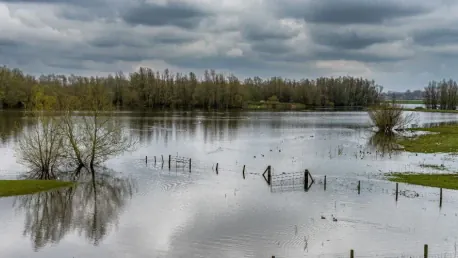Recent flooding observed during Storm Bert has sparked a widespread discussion on its potential link to climate change. The storm’s relentless downpours and resulting high waters have raised critical questions about whether such extreme weather is becoming more common due to a warming climate. Central to this inquiry is the examination of the increasing frequency and intensity of storms, characterized by intense and localized rainfall, such as that experienced during Storm Bert.
Climate Change and Weather Patterns
The warming climate plays a significant role in exacerbating weather patterns. As temperatures rise, so does the rate of water evaporation, thereby injecting more energy into the atmosphere. This increase in atmospheric energy can lead to more frequent and intense storms, particularly during the winter, while simultaneously contributing to hotter and drier summers. The vicious cycle of increasing temperatures and extreme weather events indicates a strong correlation between climate change and altered weather patterns.
Human Activity Contributions
Human activities are a central factor in driving climate change. Daily actions such as flying and driving, combined with the large-scale operations of fossil fuel companies, have resulted in significant greenhouse gas emissions. The cumulative effect of these activities has led to a warming planet, making it increasingly susceptible to severe weather events. The article underscores the critical need to address both individual behaviors and corporate practices to mitigate the impact of climate change.
Case Study of Storm Bert
Storm Bert offers a tangible example of how these changes manifest in real-time. The storm’s slow-moving front led to 36 hours of heavy rain over specific areas, mirroring the patterns expected in a warming world. While it is challenging to attribute a single event directly to climate change, the disruption caused by Storm Bert aligns with anticipated changes due to global warming. This incident underscores the importance of understanding how climate change influences localized weather events.
Scientific Advancements
In recent years, scientific advancements have allowed researchers to better discern the influence of climate change on specific weather incidents. Studies on floods in Colombia and weather events in Valencia have highlighted human-driven climate change as a critical factor in the intensity and frequency of these occurrences. These scientific insights are crucial in providing a clearer picture of the link between climate change and extreme weather.
Infrastructural and Preparedness Issues
The human impact of these events is further compounded by infrastructural and preparedness challenges. The inadequate weather forecasting for Storm Bert and the failure of flood defenses in Tenbury Wells, Worcestershire, serve as glaring examples. These incidents reveal that current infrastructure and preparedness measures may not be sufficient to cope with the evolving nature of storms induced by climate change.
Causal Connections and Ongoing Behavior
Despite the clear evidence that climate change is intensifying storms, businesses and individuals continue to operate as usual. The reluctance to take significant action was glaringly evident in the outcomes of the global climate change conference COP29, which concluded without adopting decisive measures. This ongoing behavior suggests a persistent gap between understanding the issue and implementing necessary actions to address it.
Conclusion
The recent flooding caused by Storm Bert has ignited a substantial debate about its possible connection to climate change. With the storm delivering unrelenting rain and leading to significant water levels, many are questioning if such severe weather events are becoming more frequent and intense due to global warming. The heart of this debate focuses on the potential increase in the frequency and severity of storms. These storms, marked by intense and often localized rain, demonstrate patterns that resemble those witnessed during Storm Bert. This incident serves as a case study for researchers who investigate how rising temperatures might be influencing weather patterns. While there is no definitive answer yet, the data from Storm Bert contributes to a growing body of evidence that suggests a link between climate change and the escalation of extreme weather events. This situation underscores the urgency for scientists, policymakers, and the public to consider and address the potential impacts of climate change on our environment and communities.









